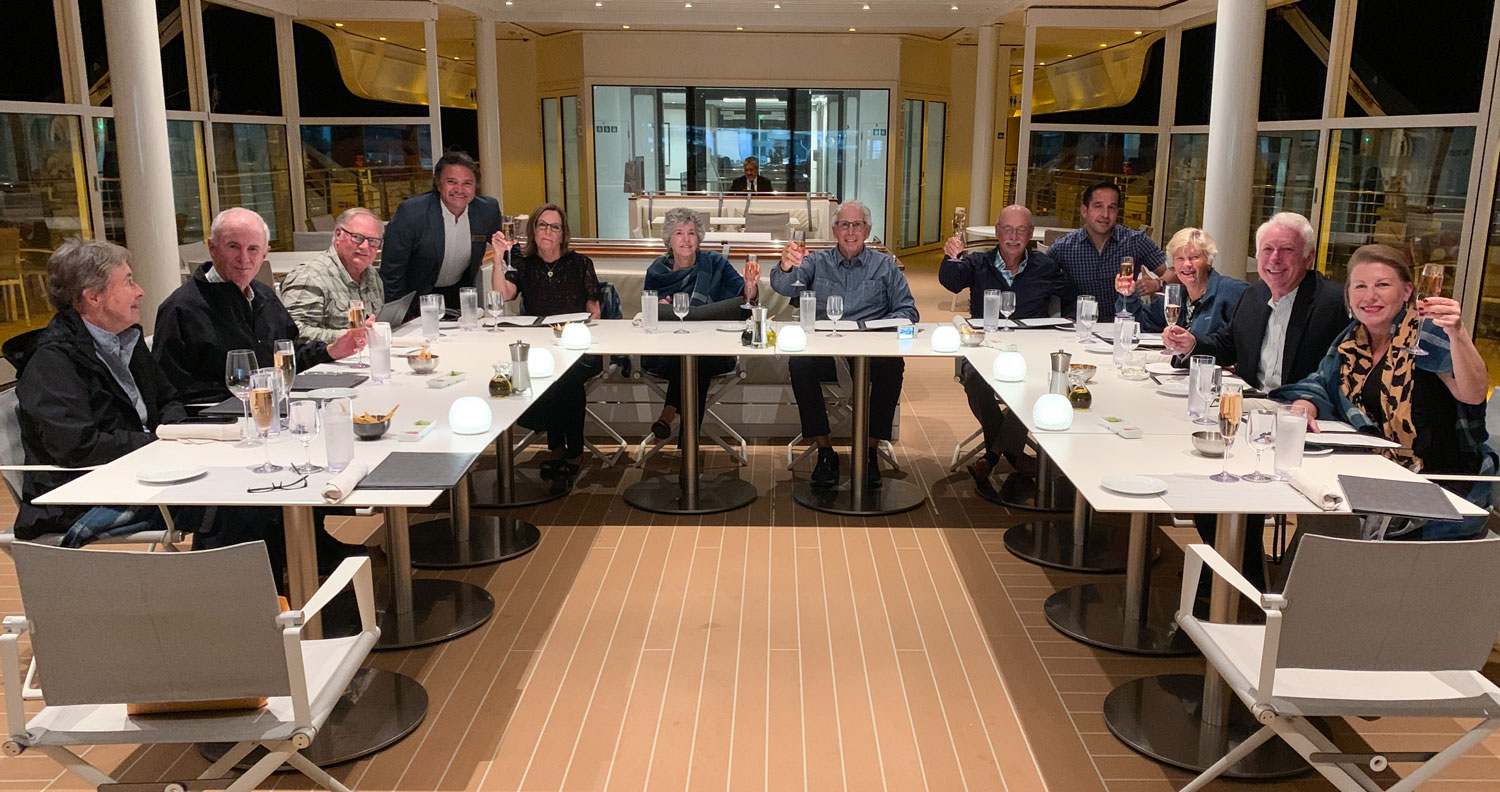

Hidden Galápagos and Peru
September 11-26, 2021
Mike and Judy Henderson
I'll leave the trip diagrams on each page so you can see where we are.


9/23/2021 (Thursday) Bahia Gardner, Española. We have leisure time on the beach this morning. We did a wet landing and just walked along the beach. There were the usual sea lions on the beach.
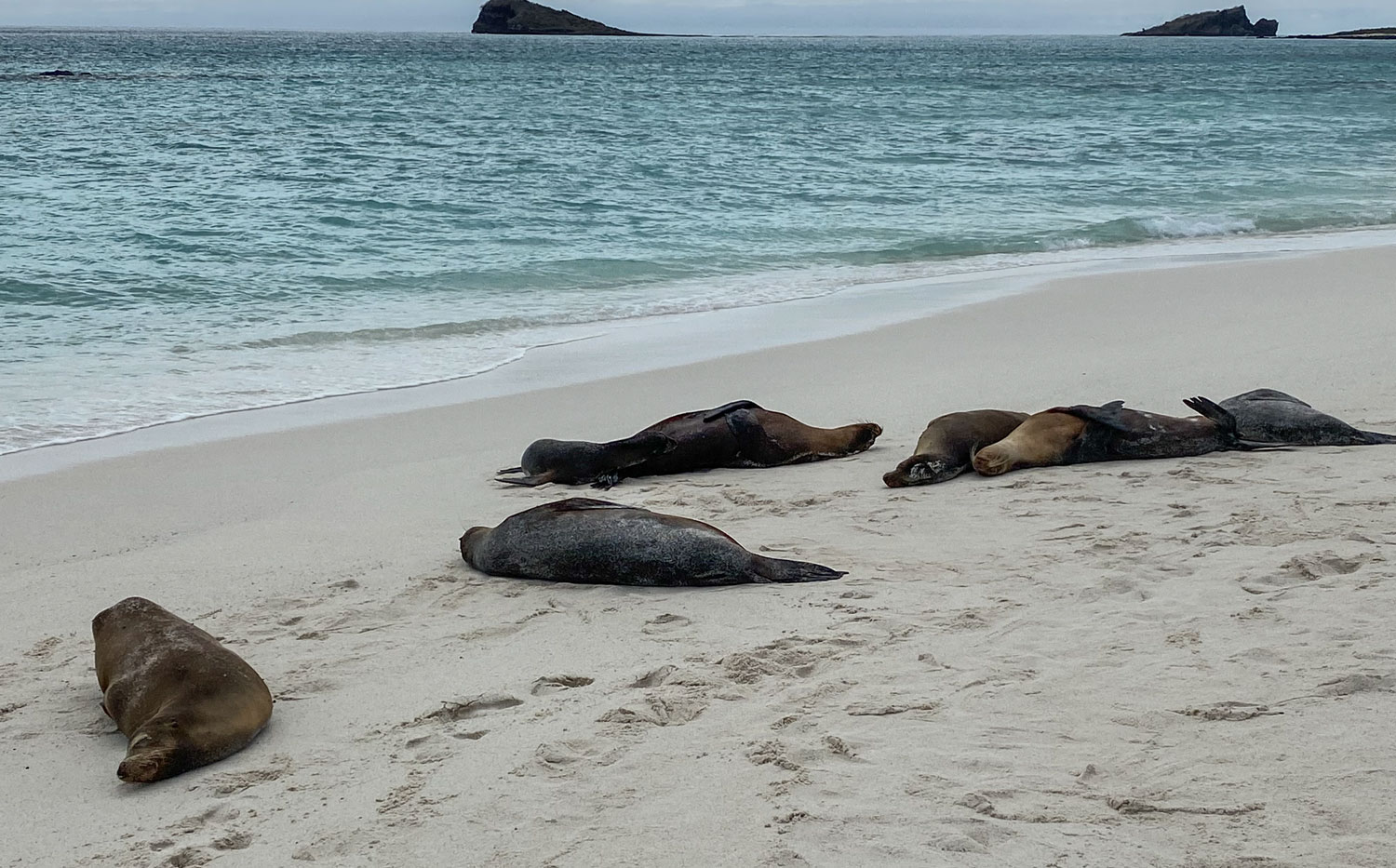
We met a couple, Mike and Cindy, from the ship, and walked and talked with them.
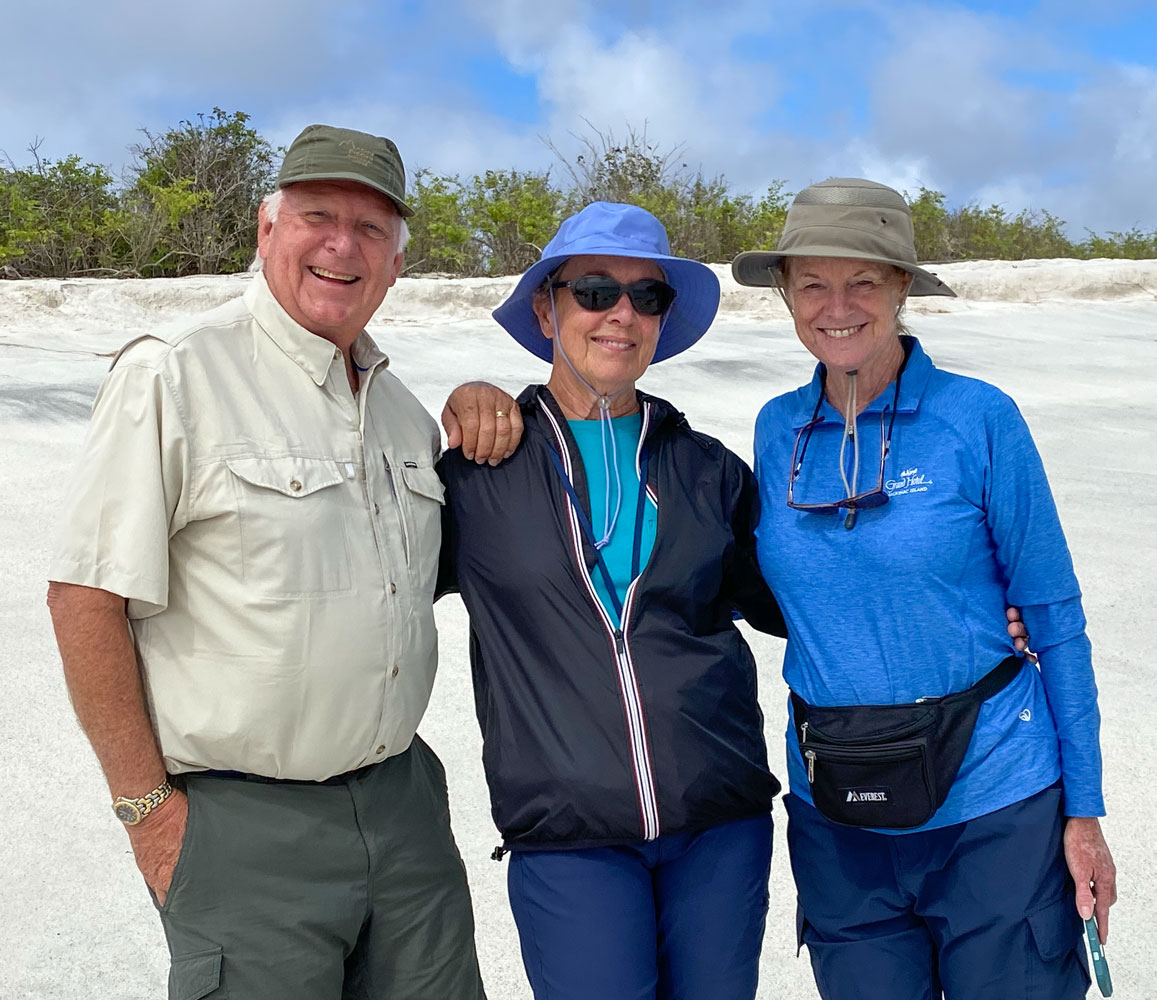
That afternoon, we went to Punta Suarez, Española for an nature walk. This turned out to be quite a challenge. The walk was two hours and thirty minutes, and the trail was very, very difficult.
I didn't take any pictures of the trail itself, but you will probably see some of it in the pictures following.
We did a dry landing on the island and were met by the usual group of sea lions. Here's a mother nursing her pup. Sea lions have four teats.
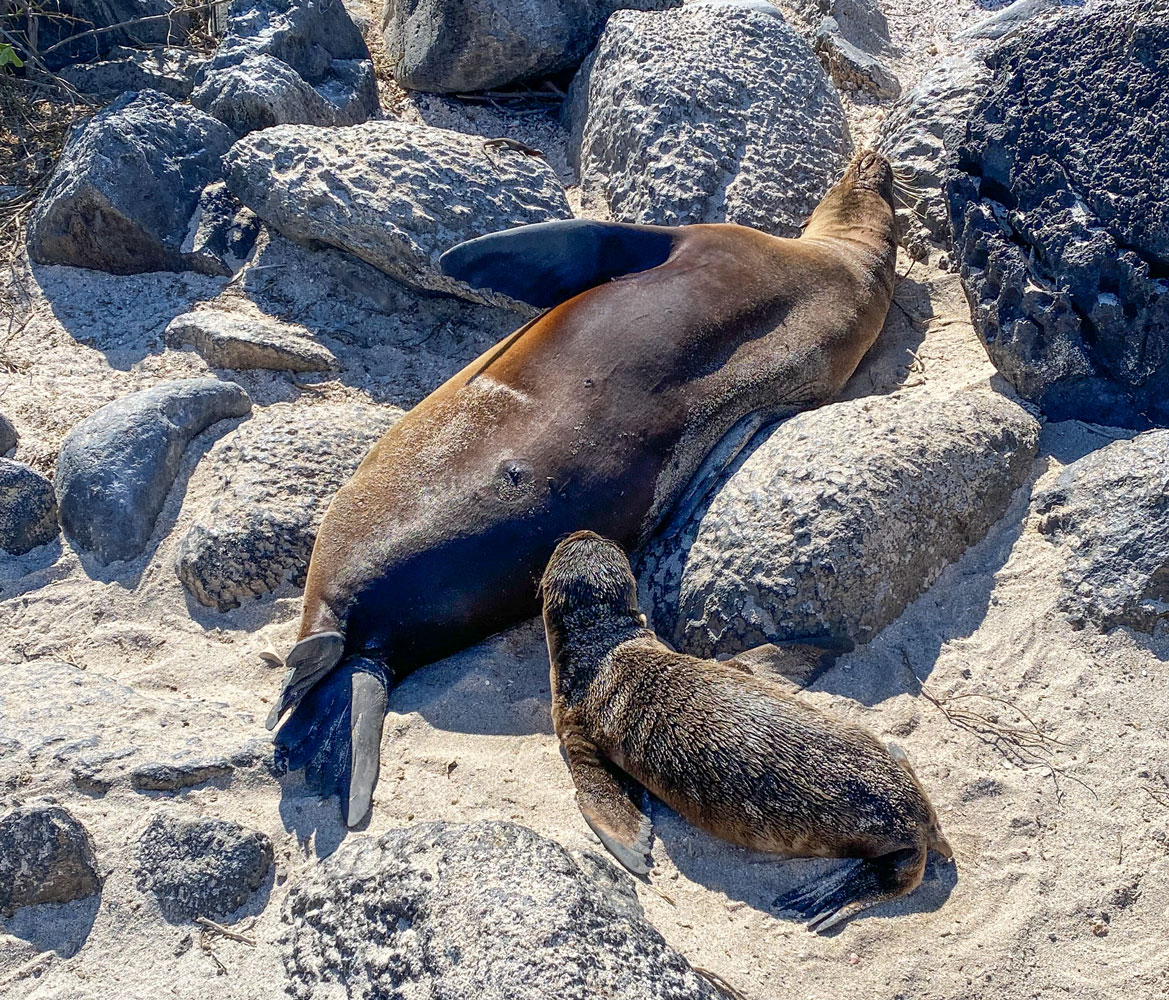
Here's a mother and pup family picture. I think this pup is very young.
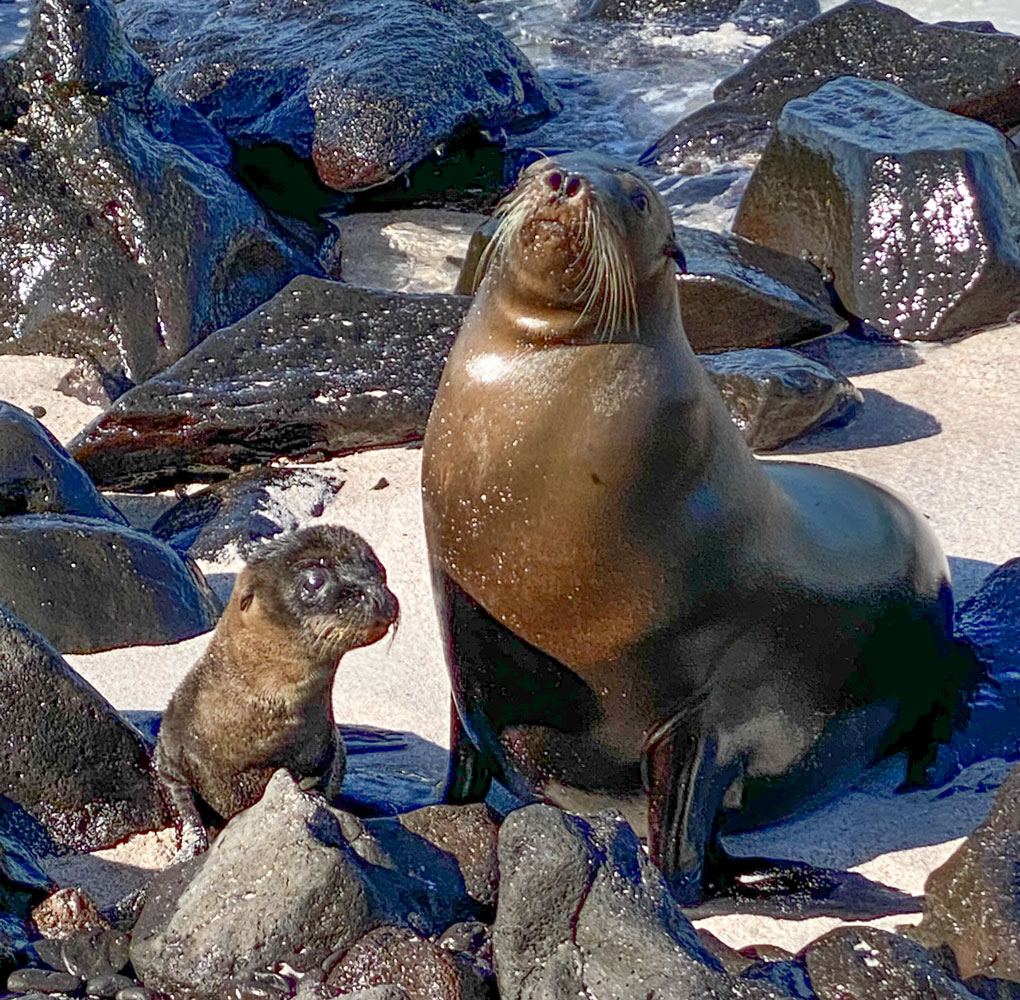
Although the pup looks a bit forlorn in the picture above, he's quite healthy and looks normal in this next picture.
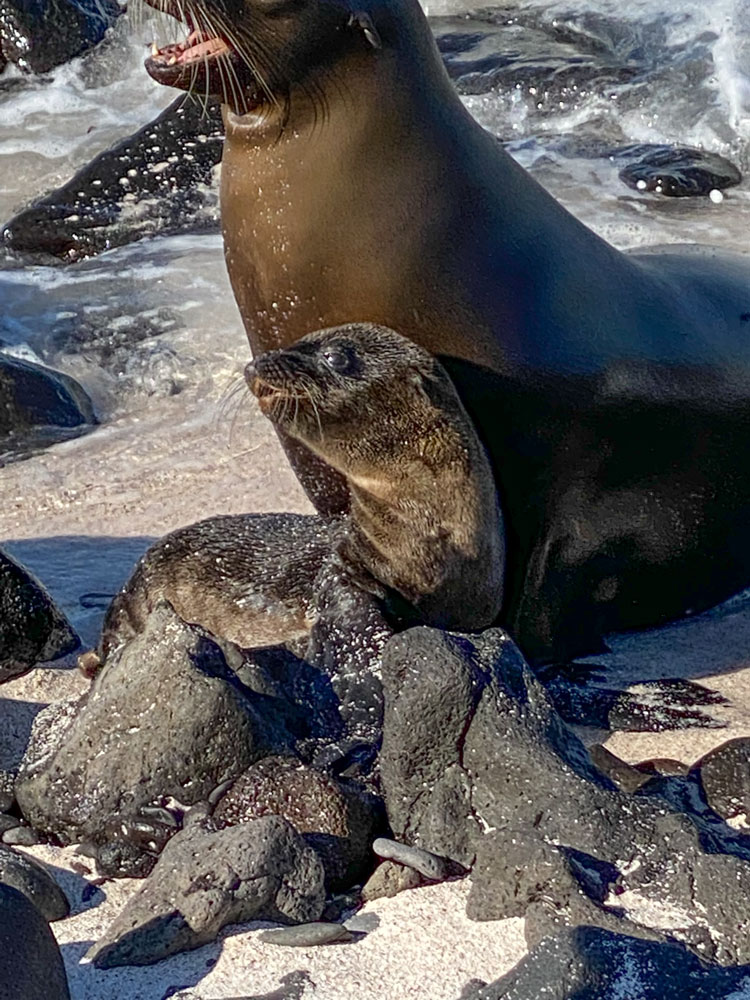
I include this next picture primarily to show how rocky the path was on this island. And this part was fairly easy - it was worse in other sections. It was two and a half hours of walking on terrain like this, and worse. At the end of the walk, I asked the tour guide if they ever had any broken legs. He laughed and said, "Broken legs, broken arms, injuries from falls." I noticed that the ship's doctor was on the island with us, and now I understand why. I know they want to minimally affect the island, but improving the trail would not affect the animals, while offering improved safety to the tourists.
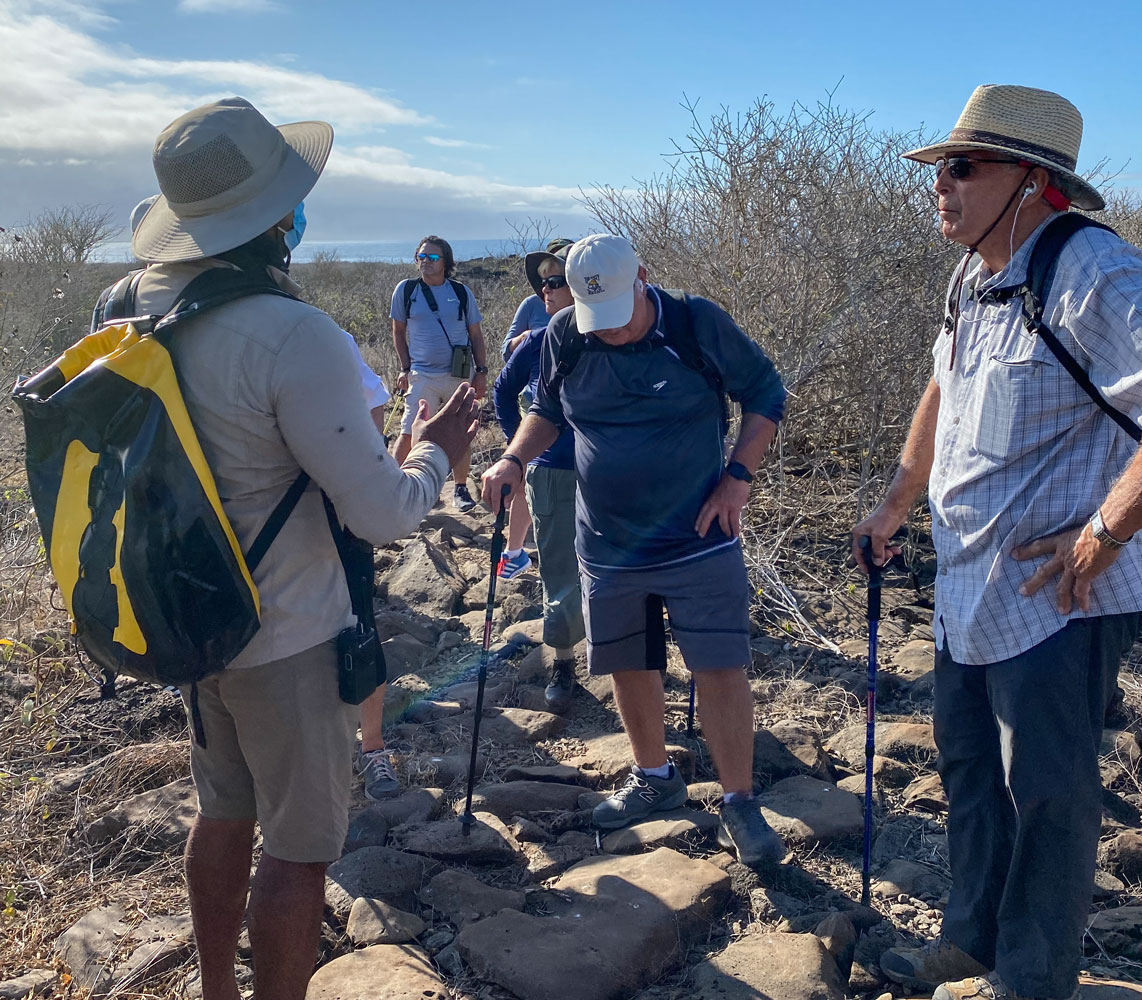
Here are some Waved Albatross in a "landing area". The guide explained that while the albatross is very graceful in the air, they're not very graceful on land. When landing, they need a relatively open area to make sure they don't hook a wing. Damage to a wing would likely be a death sentence.
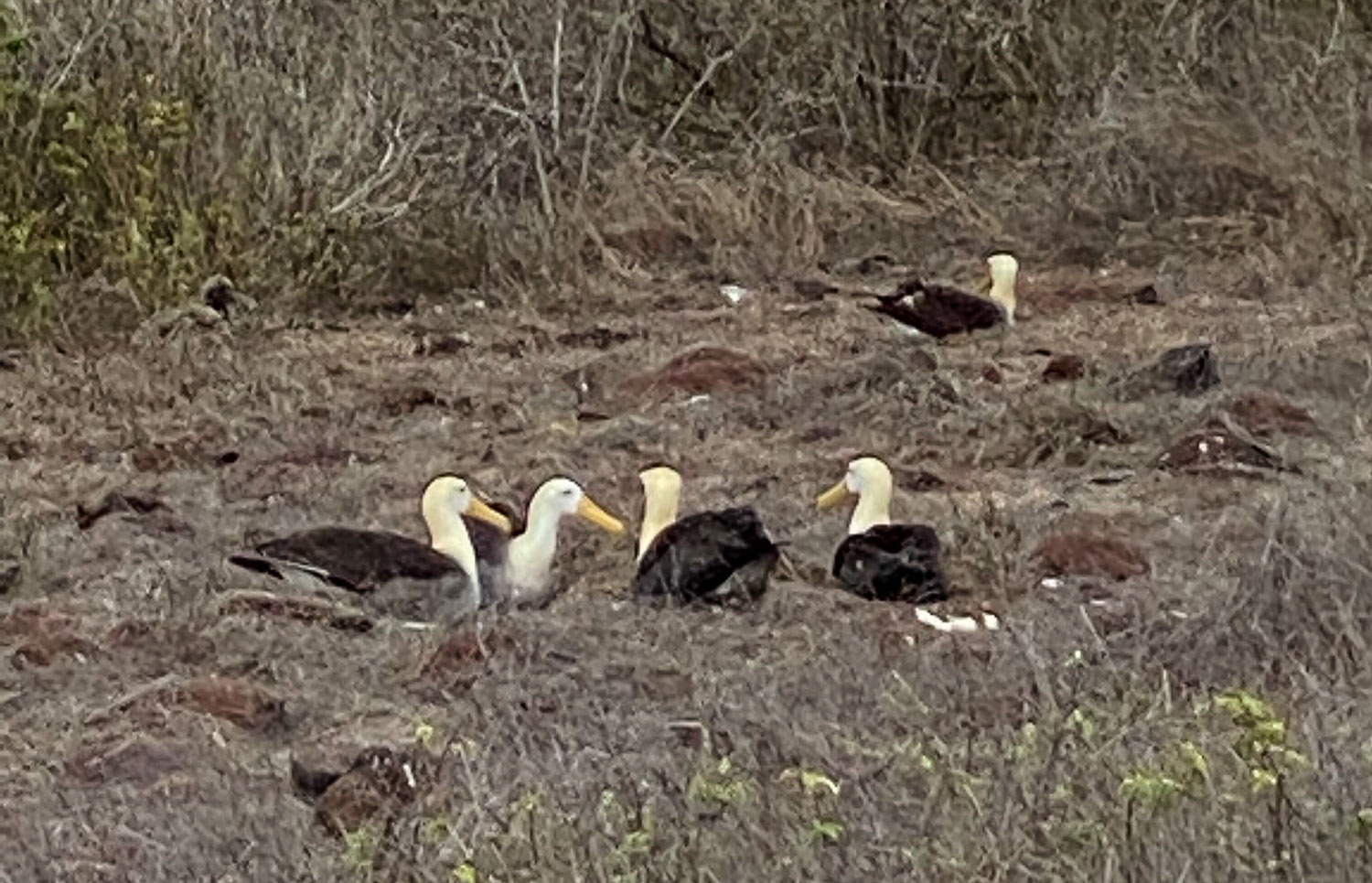
An albatross in flight (picture taken by the Silversea photographer). It is called "waved" because each feather has a light to dark wave pattern.
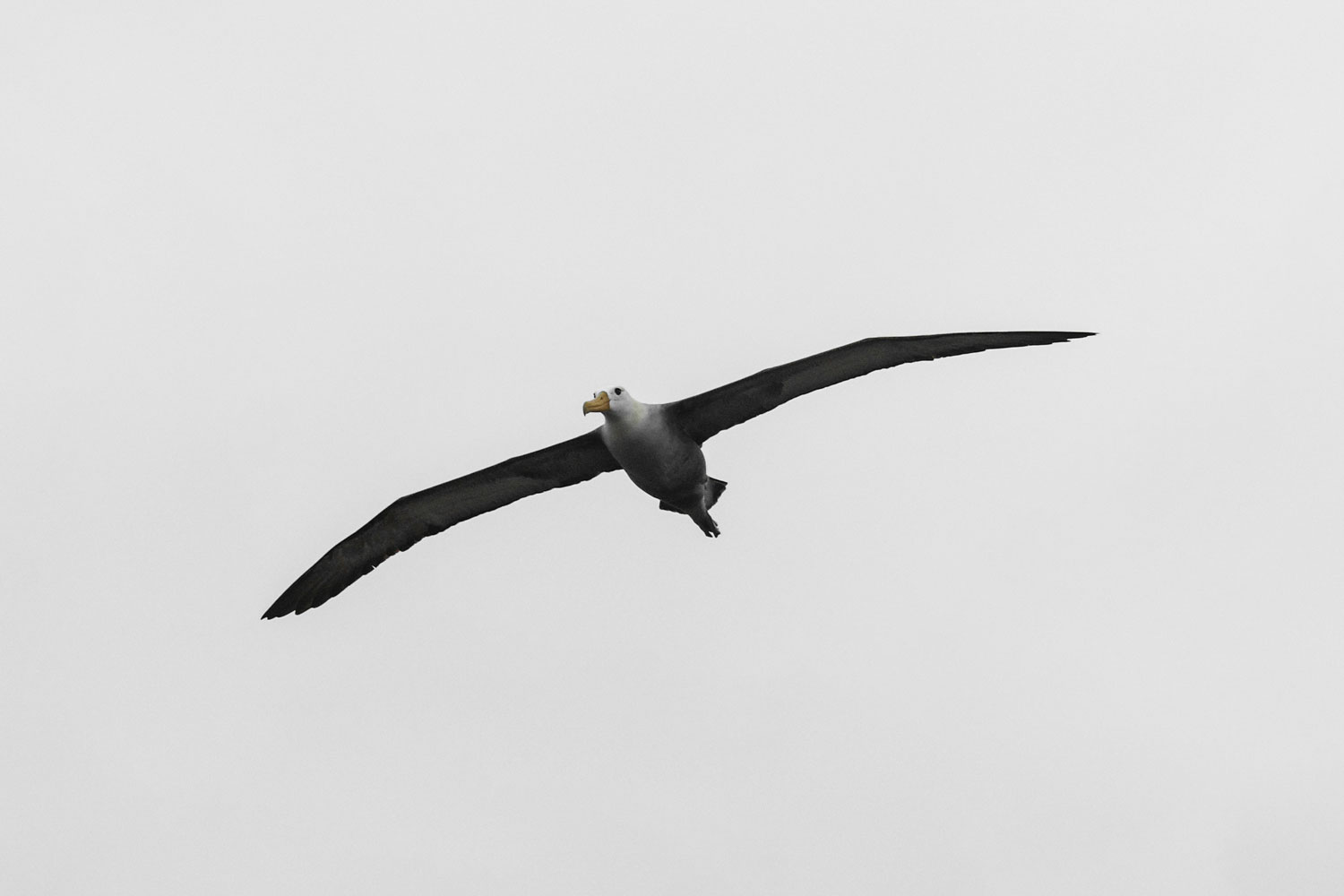
The albatross features prominently in the poem "The Rime of the Ancient Mariner" by Samuel Taylor Coleridge. If you've never read it, you can access it here. It's a long poem but I think you might enjoy it. At sea, the bird is a symbol of hope or good fortune.
Here's a picture of an albatross in flight taken with my iPhone 11 pro. It demonstrates the limitations of the iPhone camera when used in telephoto mode - the picture is just not sharp. However, the iPhone does very well with medium distance photos in good light. And it fits in my pocket.
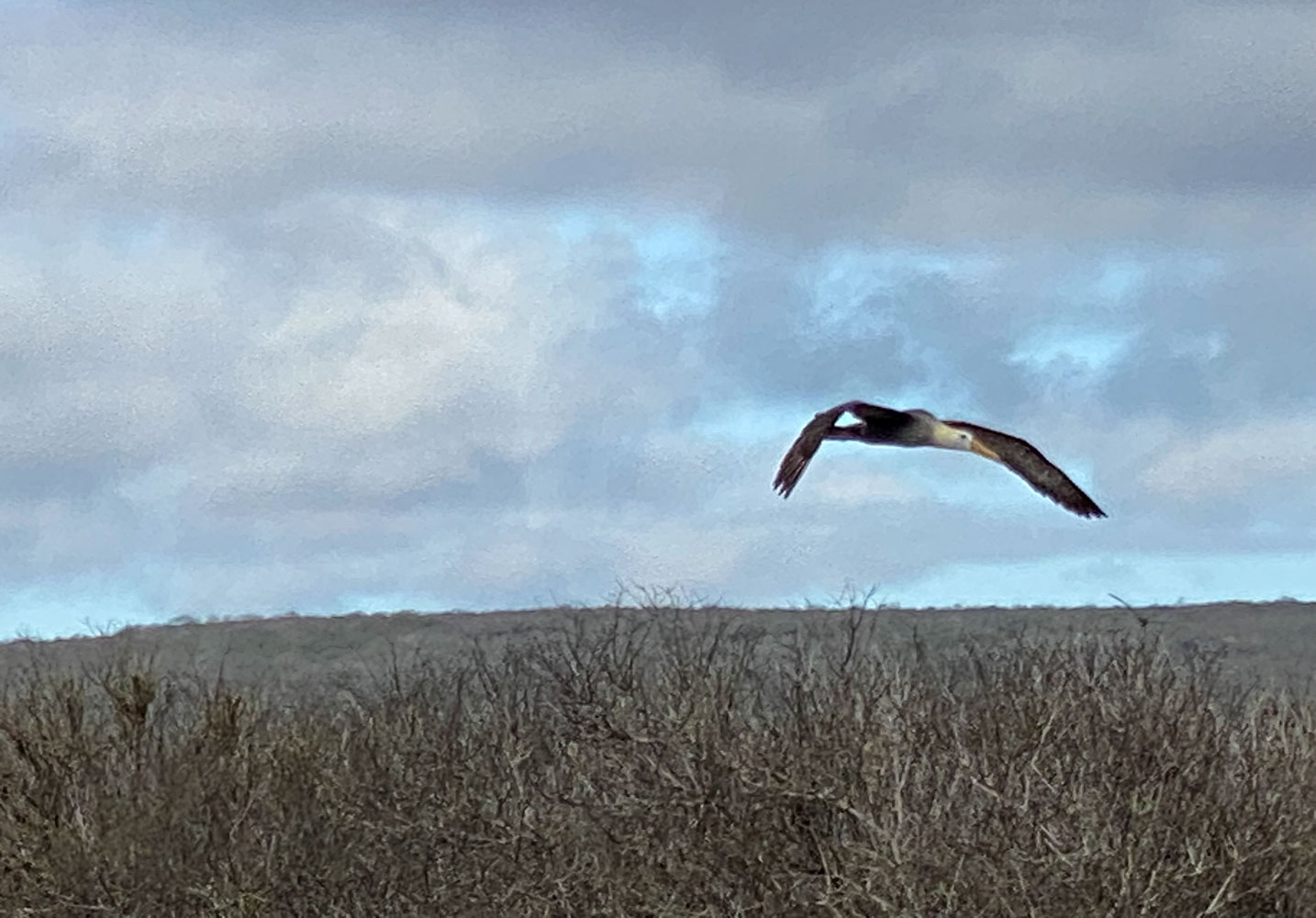
There's a cliff on the island where the prevailing wind blows onshore, giving the albatross a good lift for launching. They walk to the edge of the cliff and do their takeoff. The Waved Albatross has a wingspan of seven to eight feet.
Here's an albatross getting ready to launch.
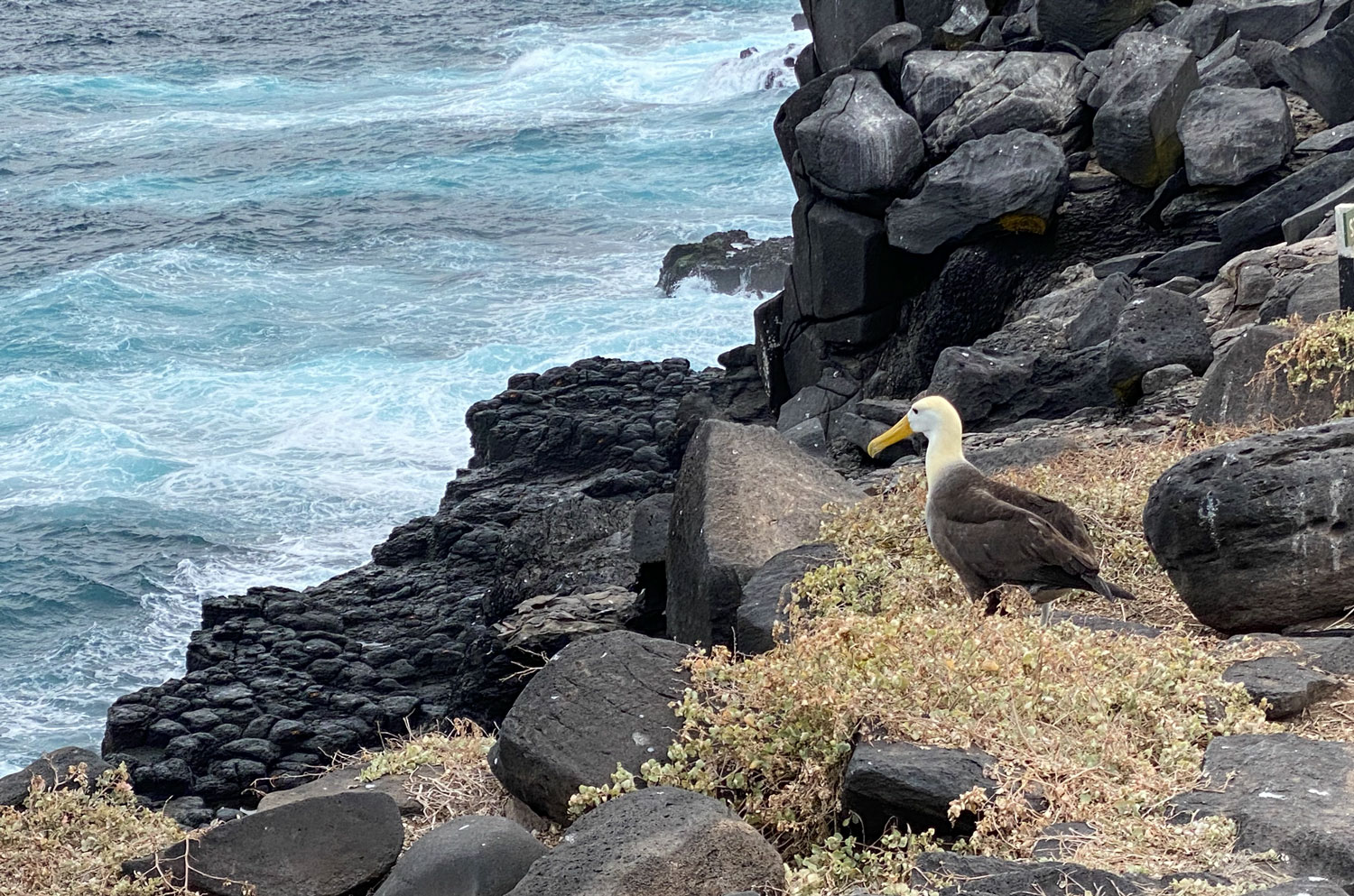
He spreads his wings and pushes off with his feet.
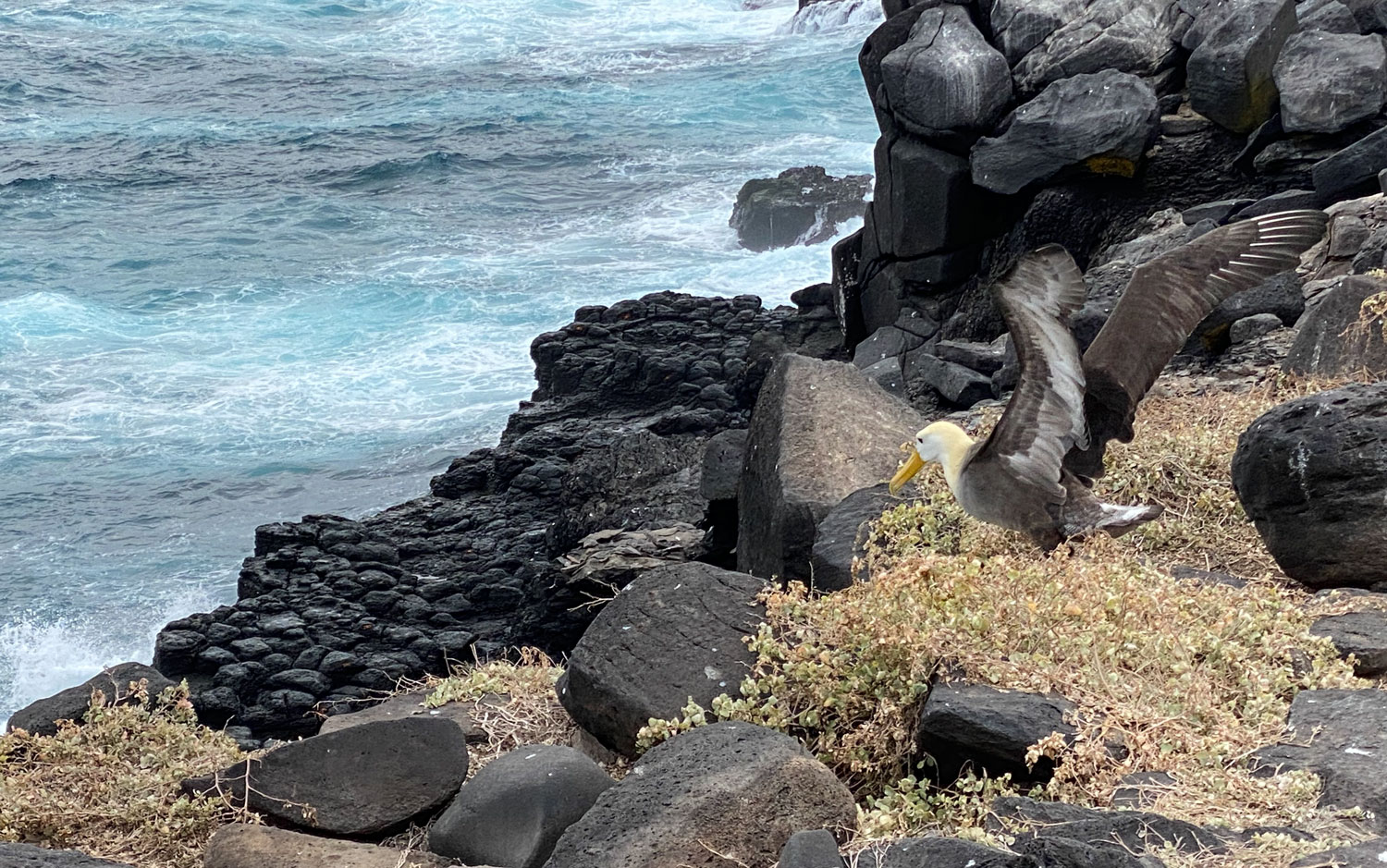
He's launched - just has to pull up the landing gear.
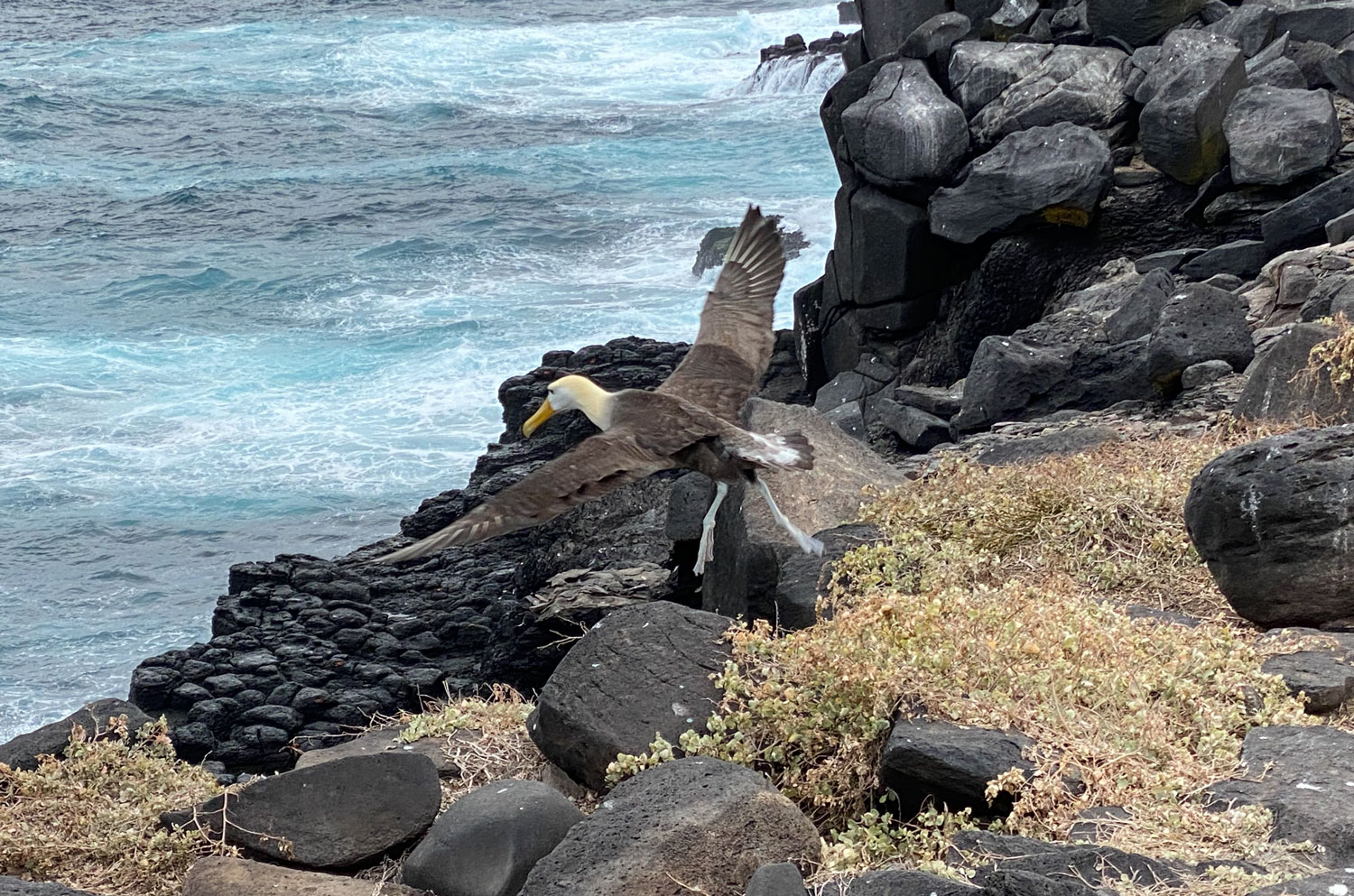
And he's off.
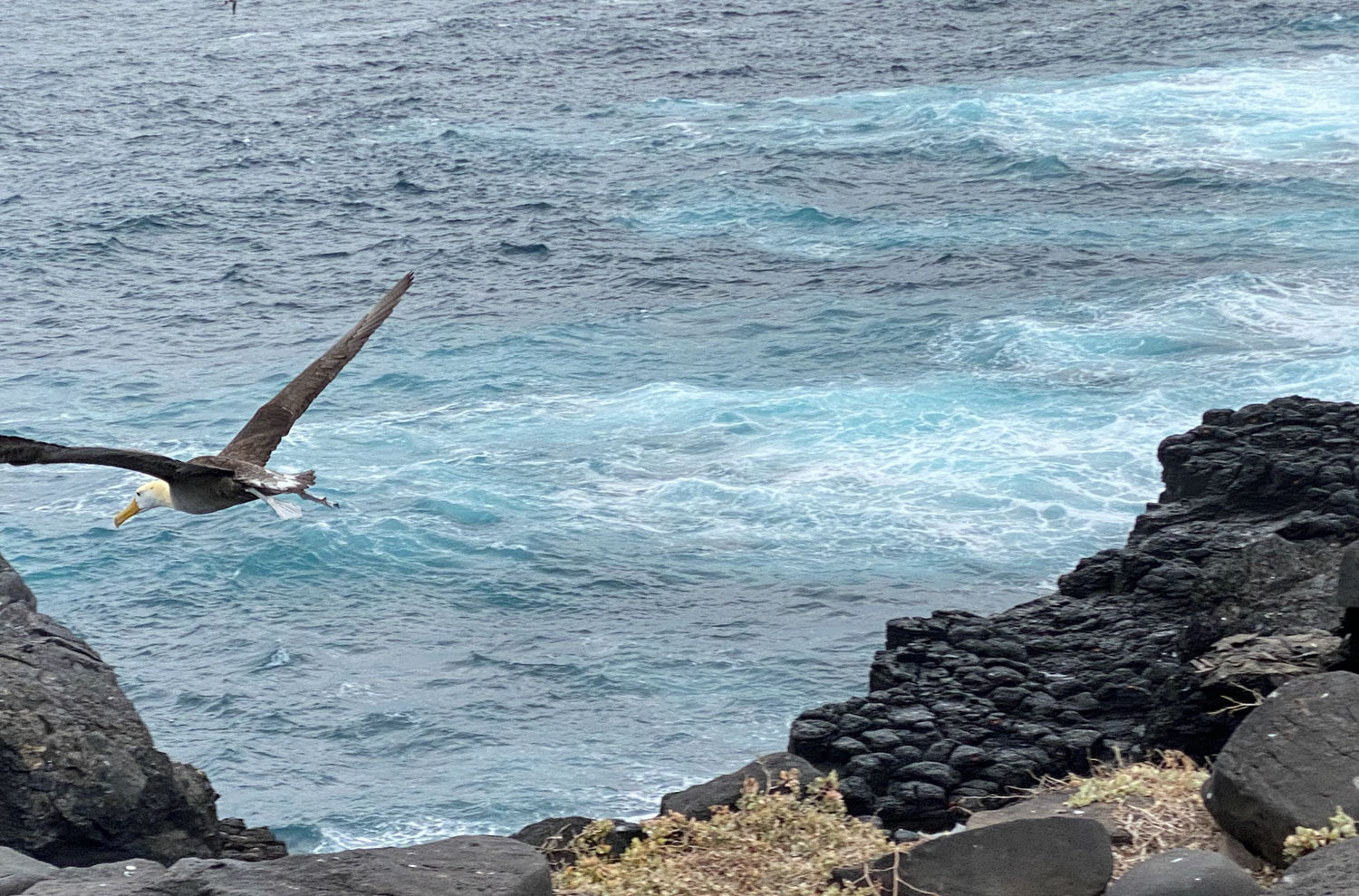
Here's a slow-motion video of the albatross taking off.
Another picture to show what the terrain was like for our walk. This really is the kind of terrain we had to walk over for two and a half hours.
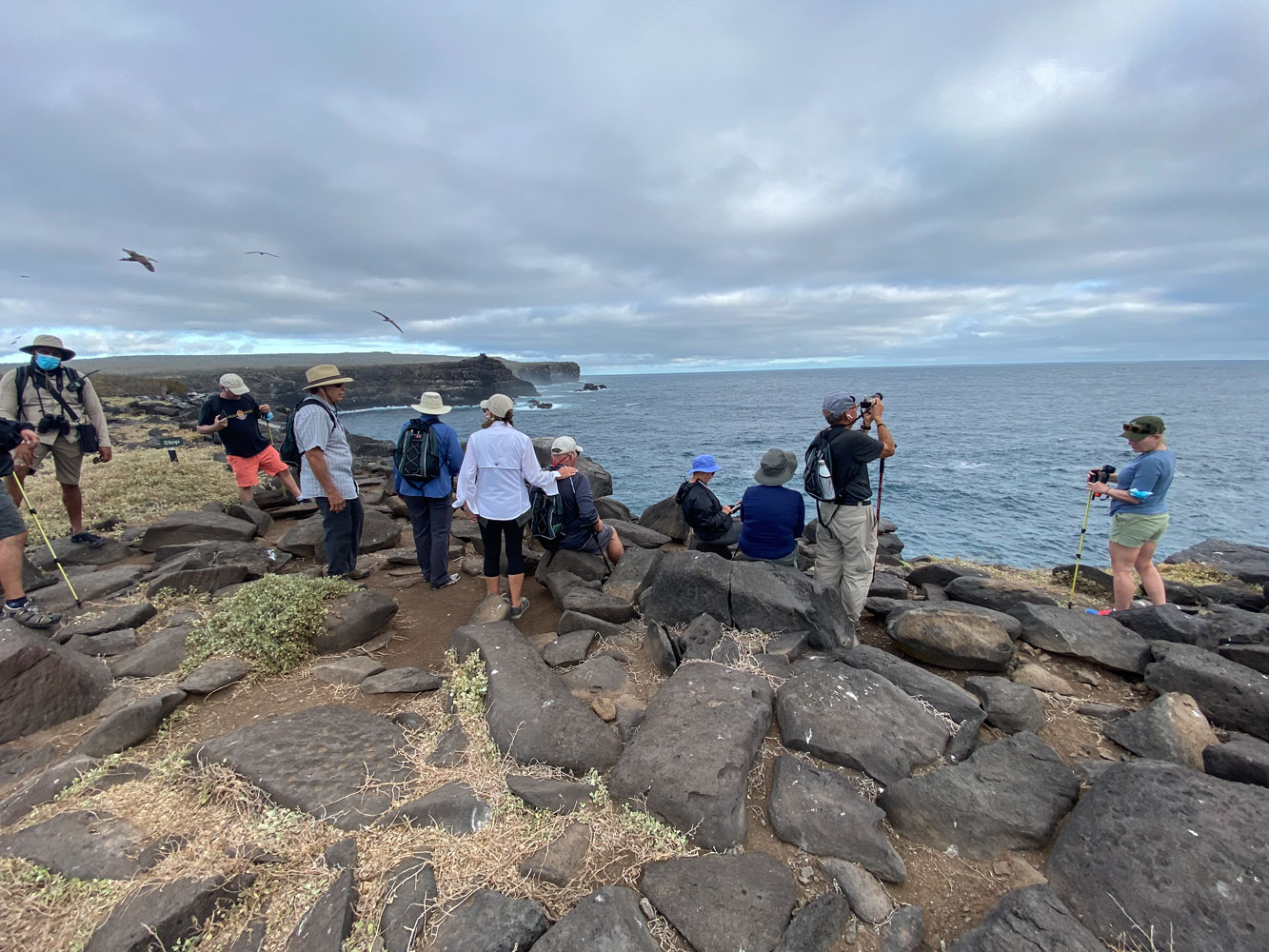
I think this is a finch.
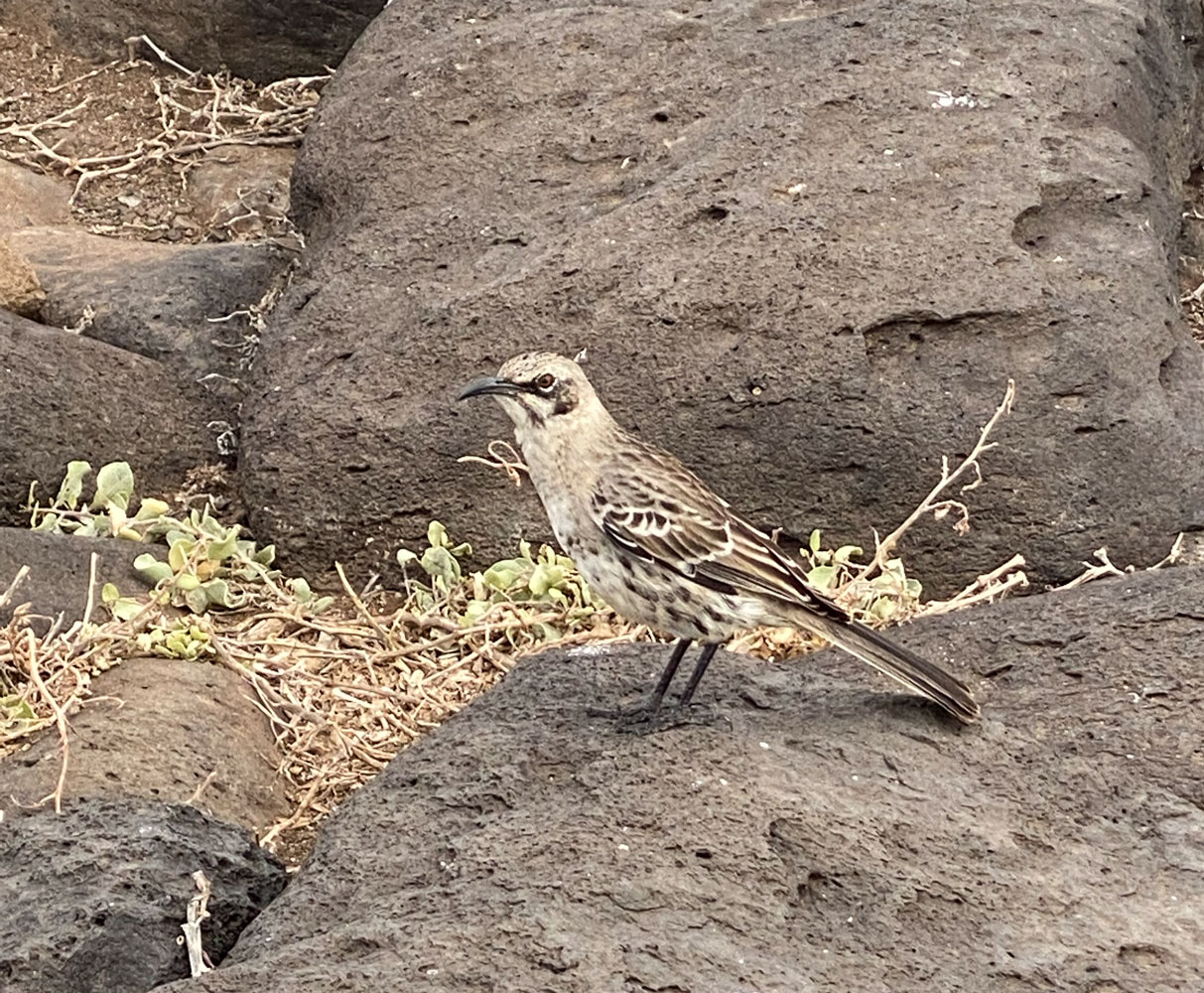
A blue-footed Boobie.
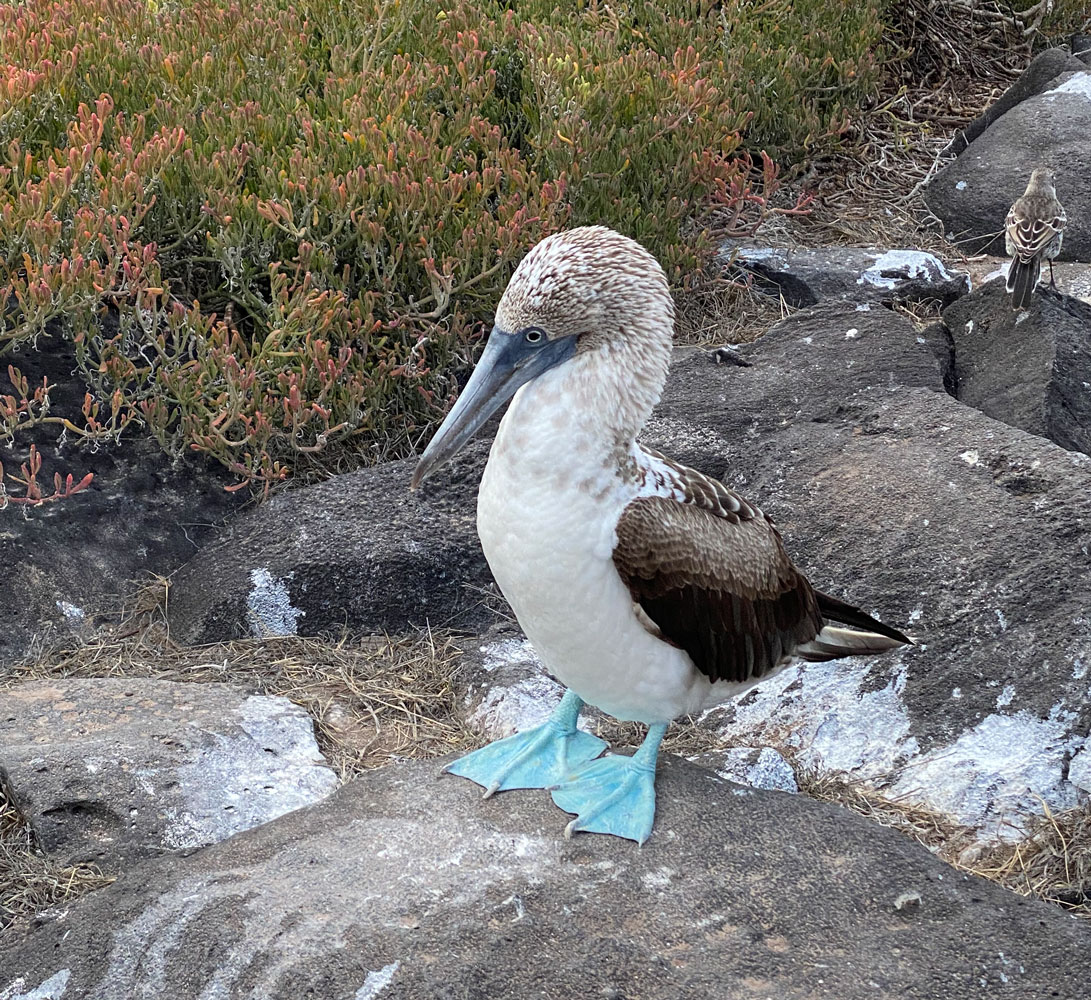
A blowhole in action.
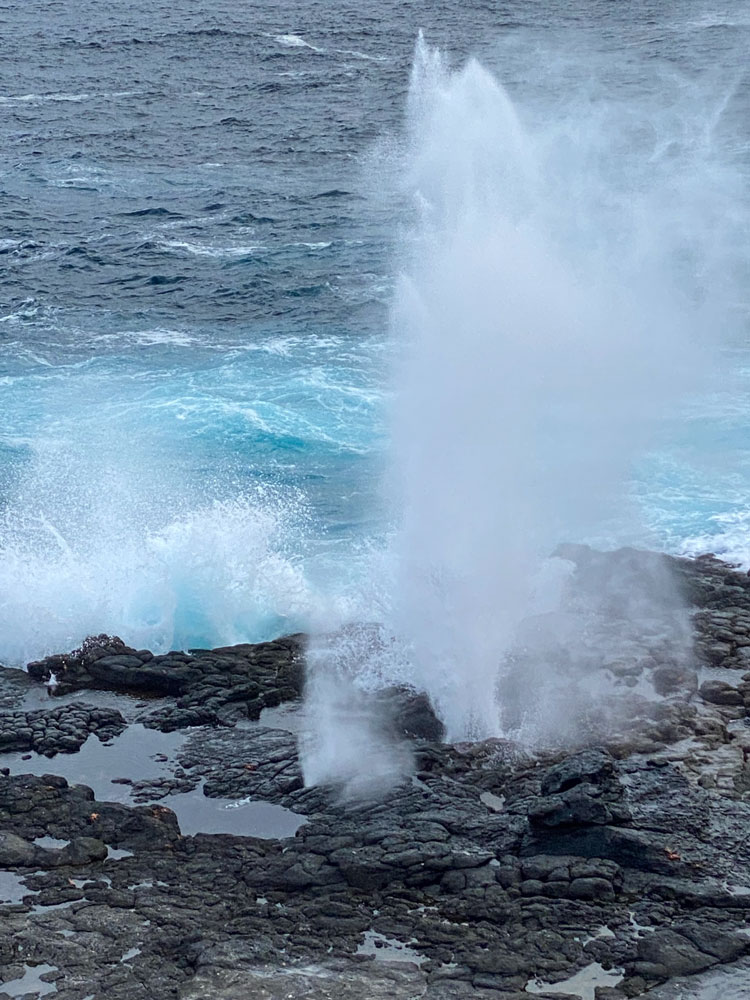
A blue-footed boobie mating pair. The female is on the right with the darker blue feet. The female does not always have the darker feet.
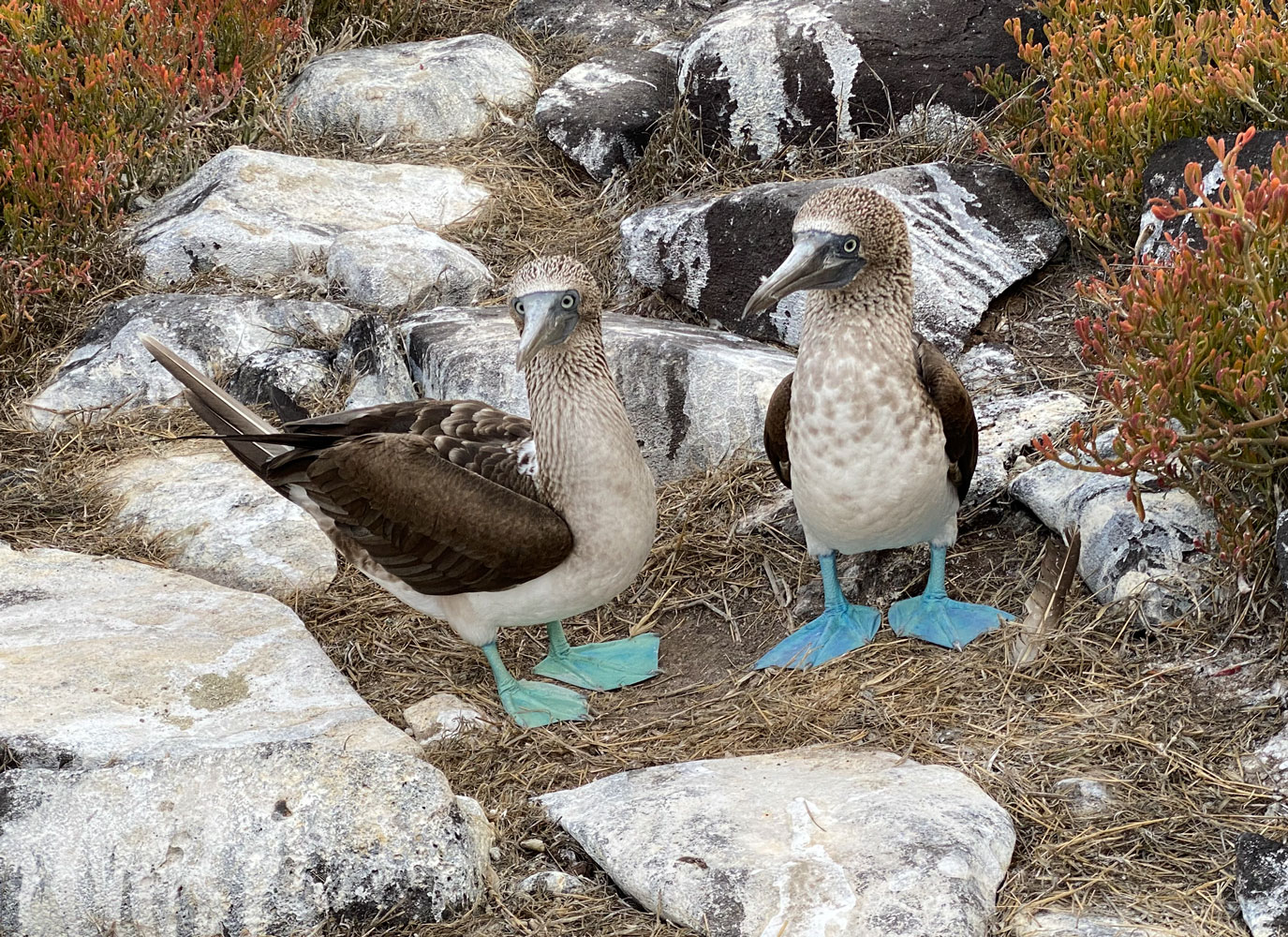
A mess of Iguanas.
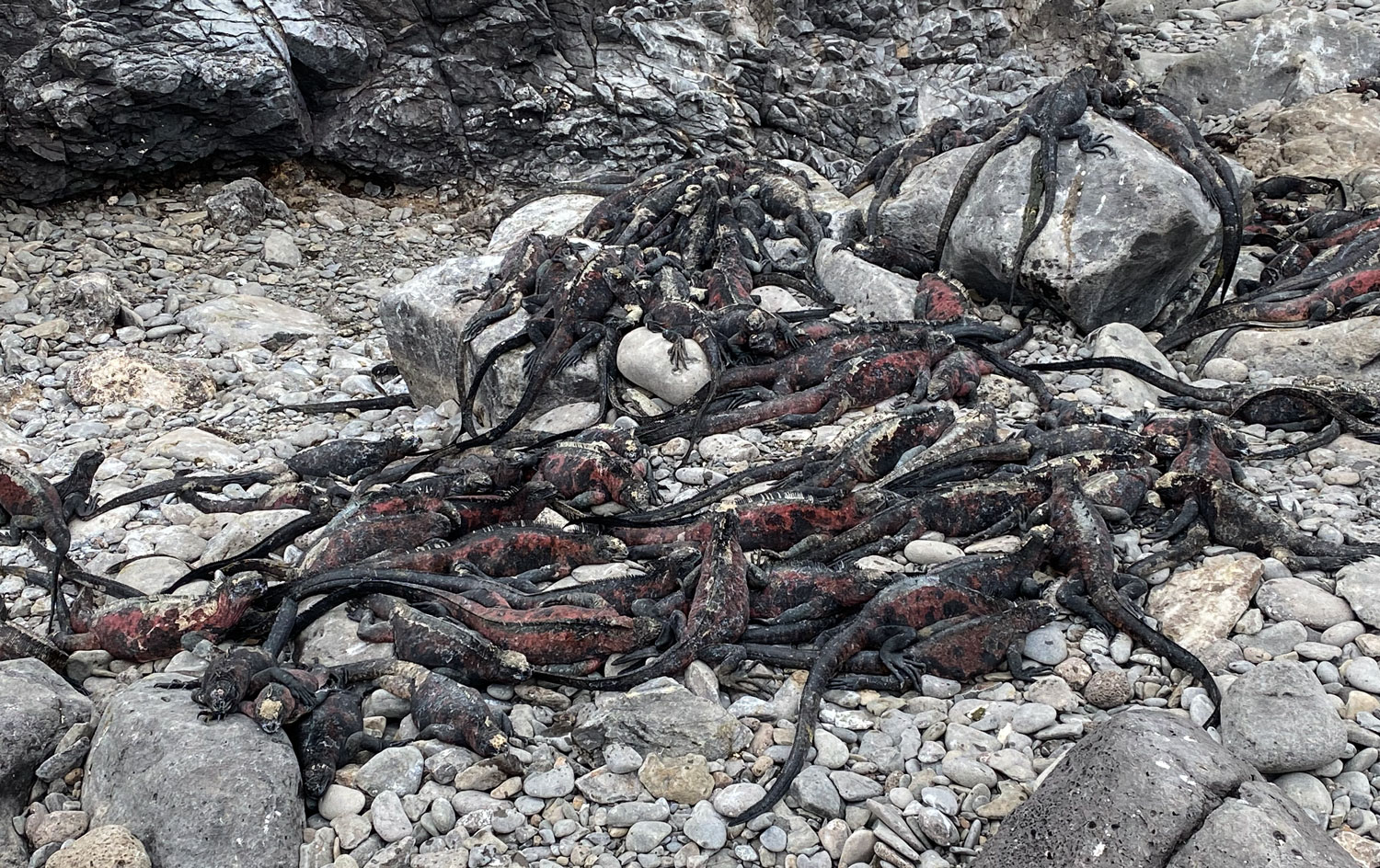
And that was the end of our adventure nature walk. I was certainly glad to see it finish with no injuries to anyone in the group. That evening (Thursday) we had ourTauck Farewell Dinner on the 7th deck. We depart on Saturday, but Tauck couldn't have the dinner on Friday because everyone would have their suitcases packed and in the hallway on Friday evening.
